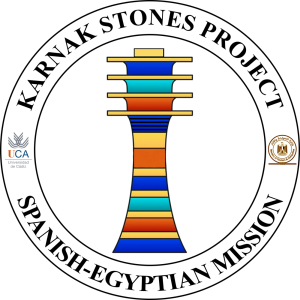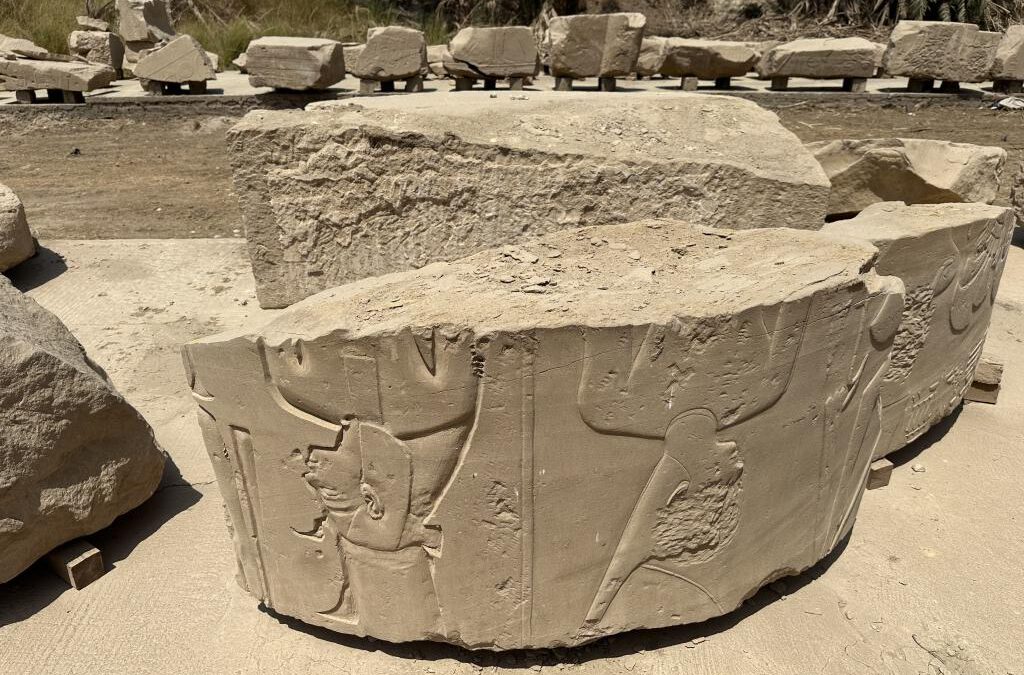One of the most exciting aspects of Karnak stones project team at Karnak is the process of linking
individual blocks to their original locations within the Great Hypostyle Hall, one of the most iconic
features of the temple complex. Through meticulous documentation and historical comparisons,
we’ve been able to trace several blocks back to their original positions near Columns 134 and 132 of
the Hall, key elements of the structure. These connections are not just archaeological discoveries;
they are imprtant pieces of the puzzle in reconstructing the temple’s lost architectural layout. The
Great Hypostyle Hall, with its towering columns and intricate carvings, was once a marvel of ancient
Egyptian architecture, serving both a religious and political purpose. Its scale and grandeur were
designed to reflect the divine power of the pharaohs and the gods they worshipped. However, like
much of Karnak, the Hall has suffered from centuries of erosion, natural disasters, and human
intervention. As a result, large sections of the structure have been lost or displaced over time, leaving
behind scattered blocks that hold the key to understanding its original form. By carefully documenting
the stone blocks in the mastabas (M1, M2, M3) and comparing them with historical records, we’ve
identified several that can be definitively linked to the Great Hypostyle Hall, particularly Columns 134
and 132. These columns, which once stood at the heart of the Hall, acted as important references in
our investigation.
The inscriptions, carvings, and measurements on the blocks allowed us to make these connections,
providing valuable insights into how the Hall might have originally looked and how these scattered
pieces fit together within its grand design. This process of linking the blocks is not just about
identifying their origins; it’s about piecing together the fragmented history of Karnak. Each block that
we can confidently connect to the Hall adds another layer to our understanding of how the temple
once stood, helping us visualize its original splendor. These results are not only significant for their
historical value but also for their role in future reconstruction efforts. By understanding where these
blocks came from and how they relate to the structure, we can begin to reassemble lost sections of
the temple with greater precision. Our work is not just about conserving individual stones; it’s about
reconstructing the history of a monument that was once the center of religious and political life in
ancient Egypt. As we continue to study and document these blocks, we are getting closer to restoring
a fuller picture of Karnak’s architectural evolution, one that can inform both future scholarship and
preservation strategies. The connections we’ve made with Columns 134 and 132 are just the
beginning. As we uncover more blocks and continue to refine our understanding of their relationships
to the Great Hypostyle Hall, we move ever closer to bringing Karnak’s lost history back to life. Each
new discovery is a step toward reconnecting the pieces of this magnificent temple complex, ensuring
that its legacy is preserved for future generations to appreciate and learn from.

